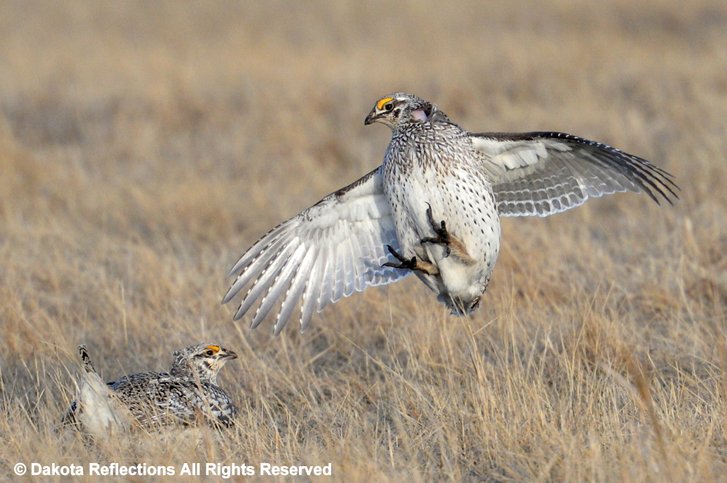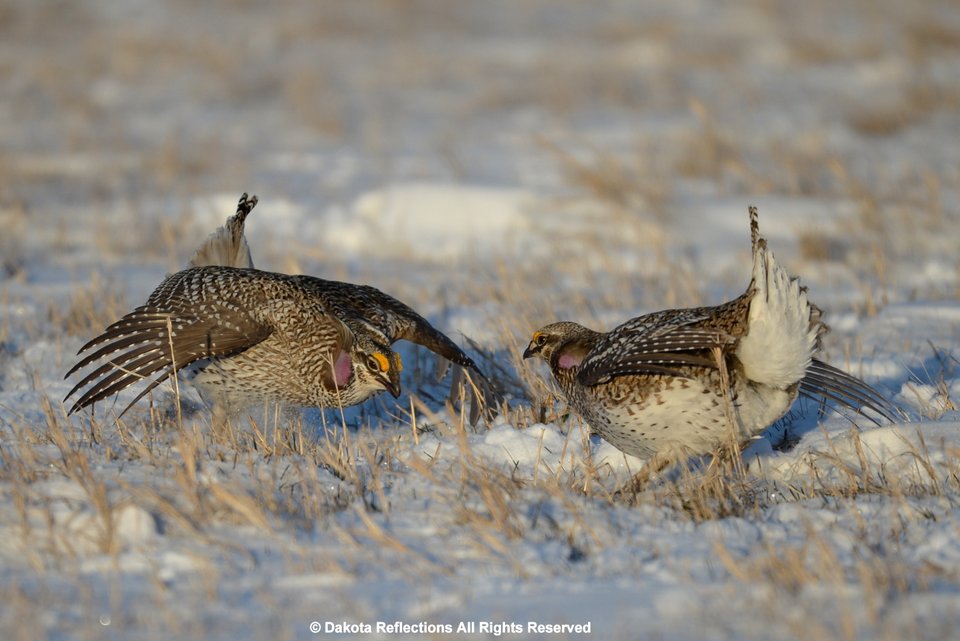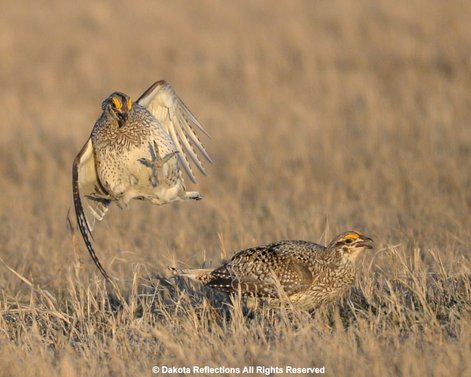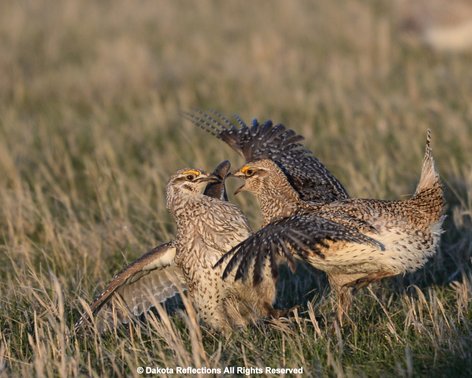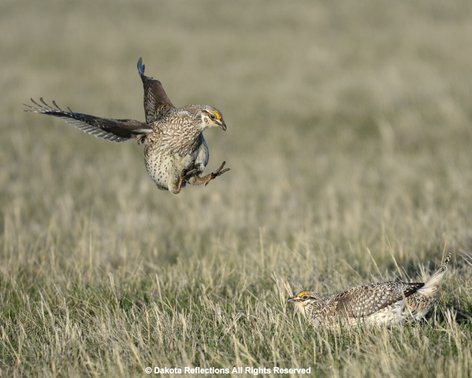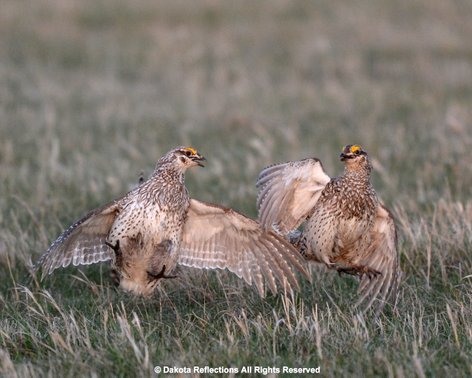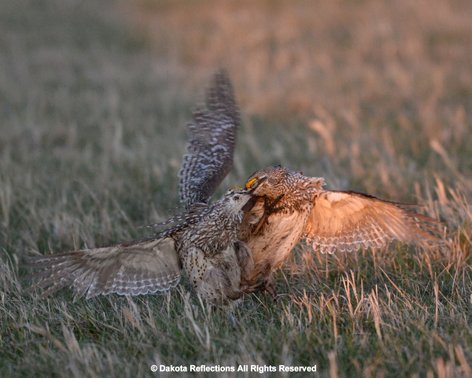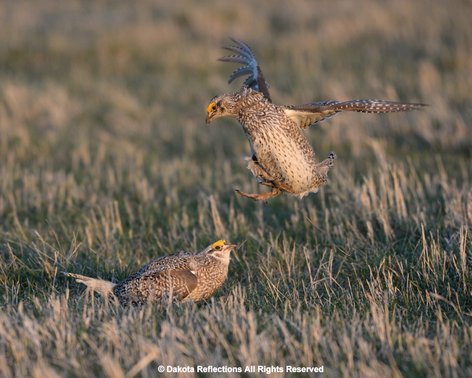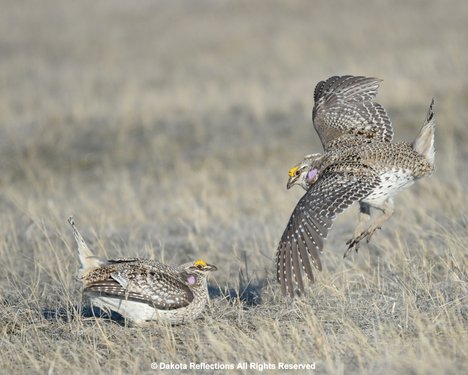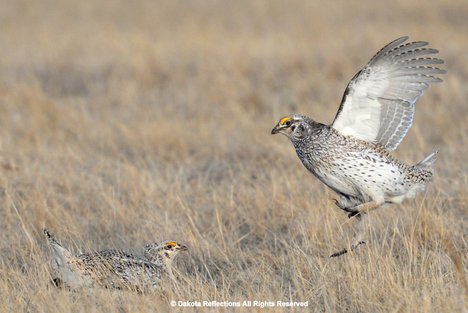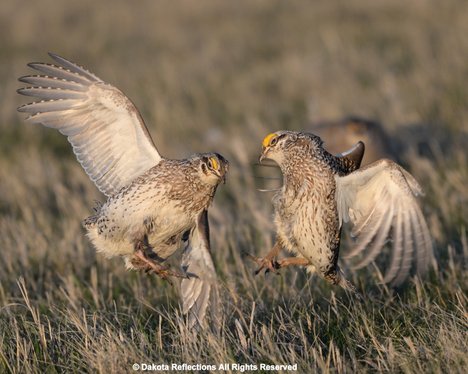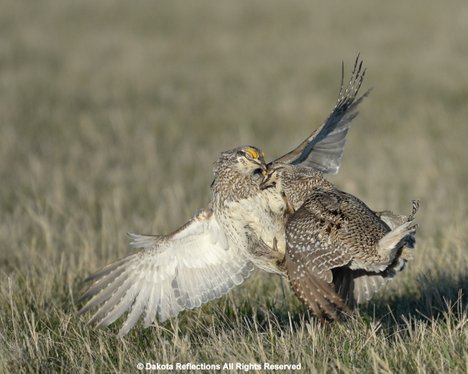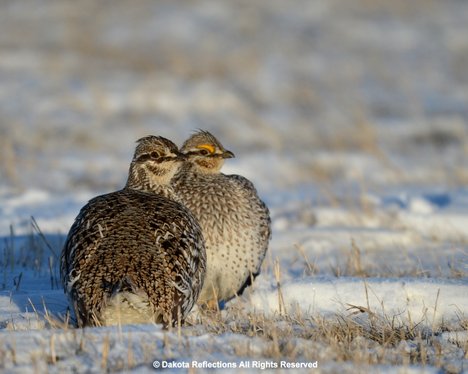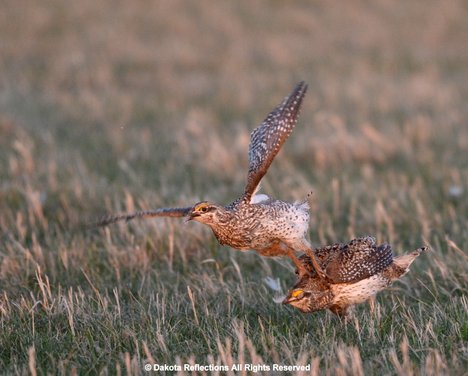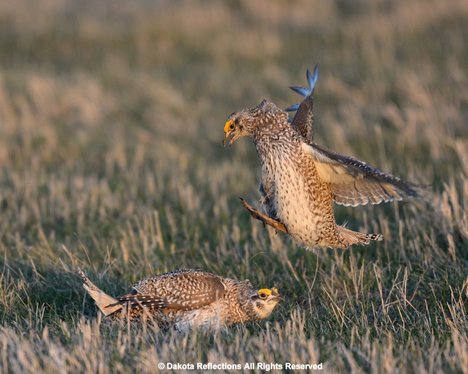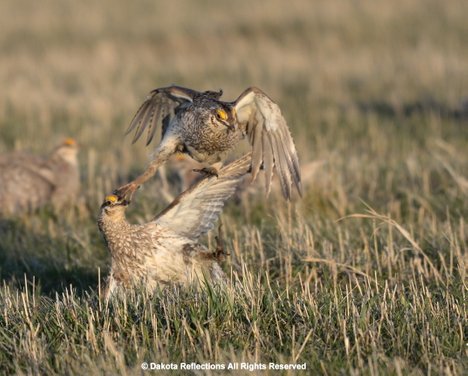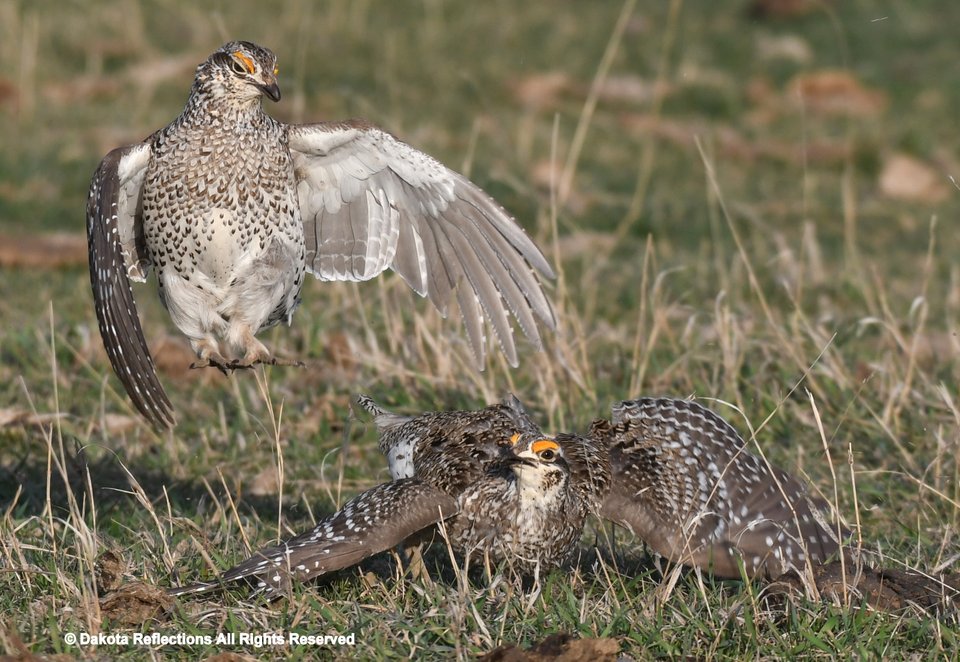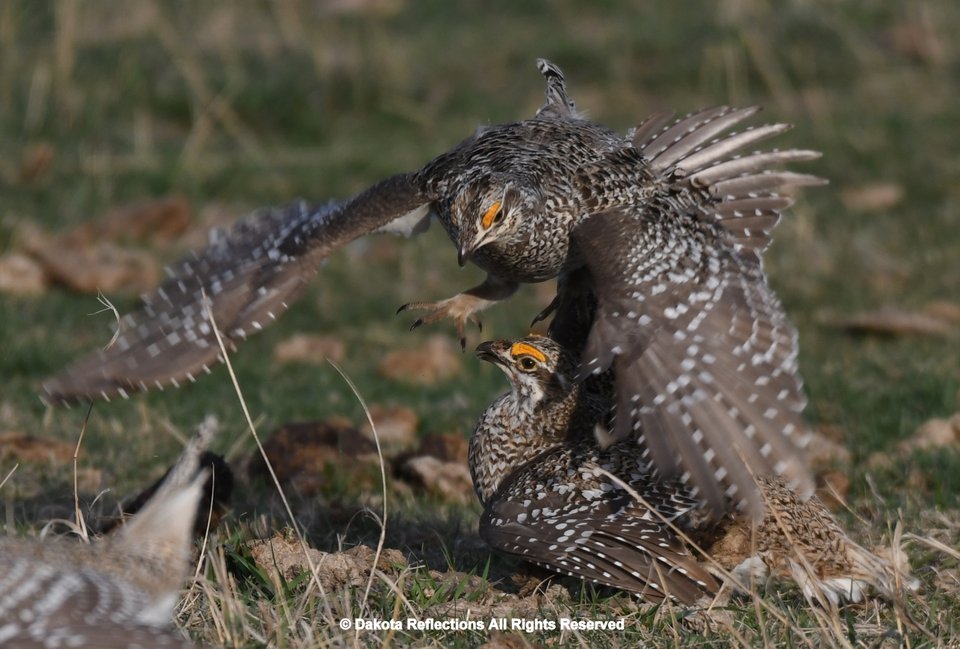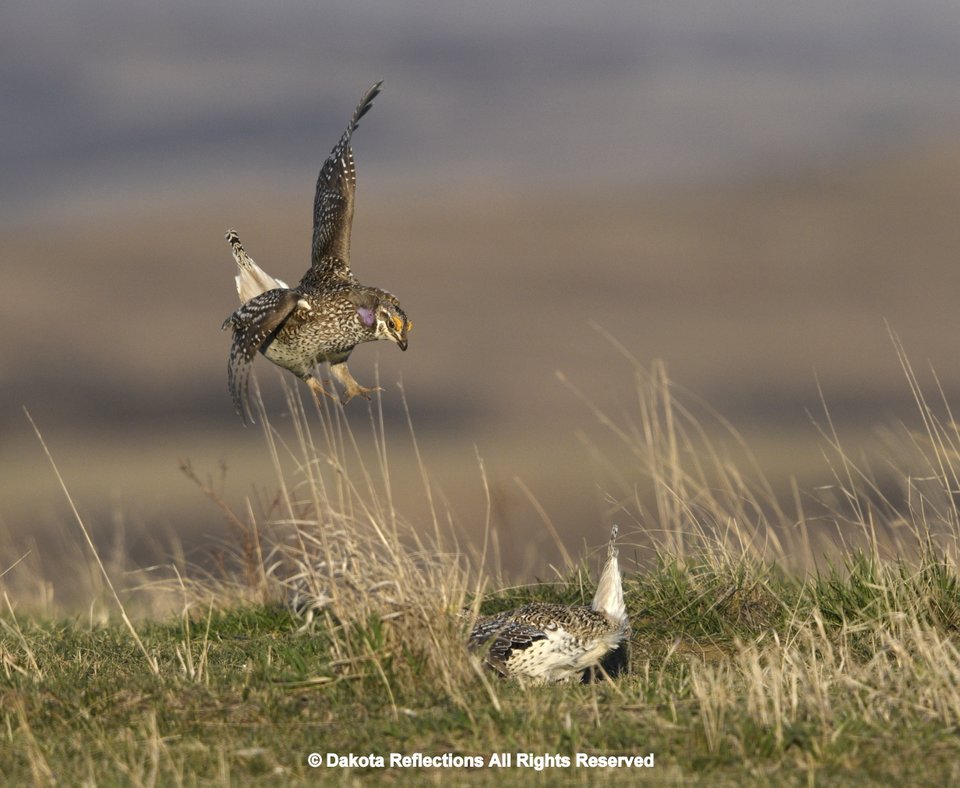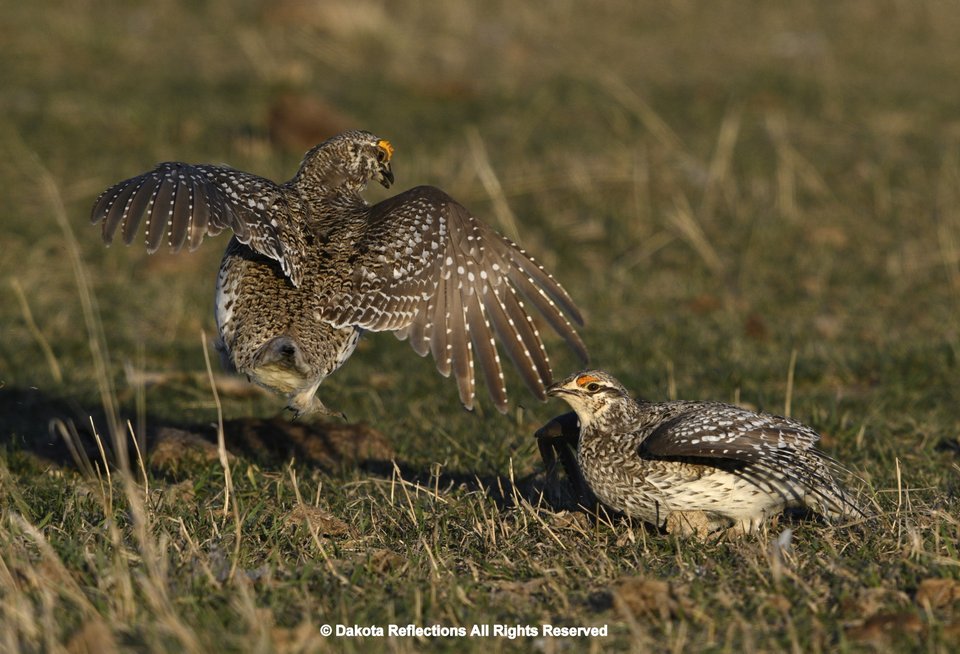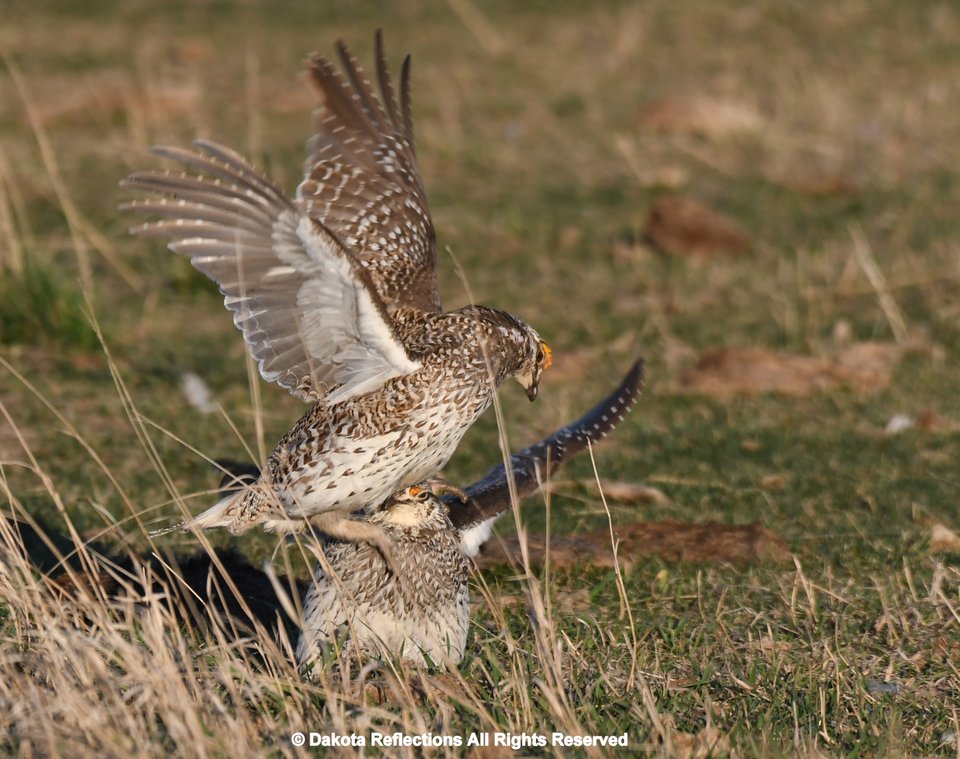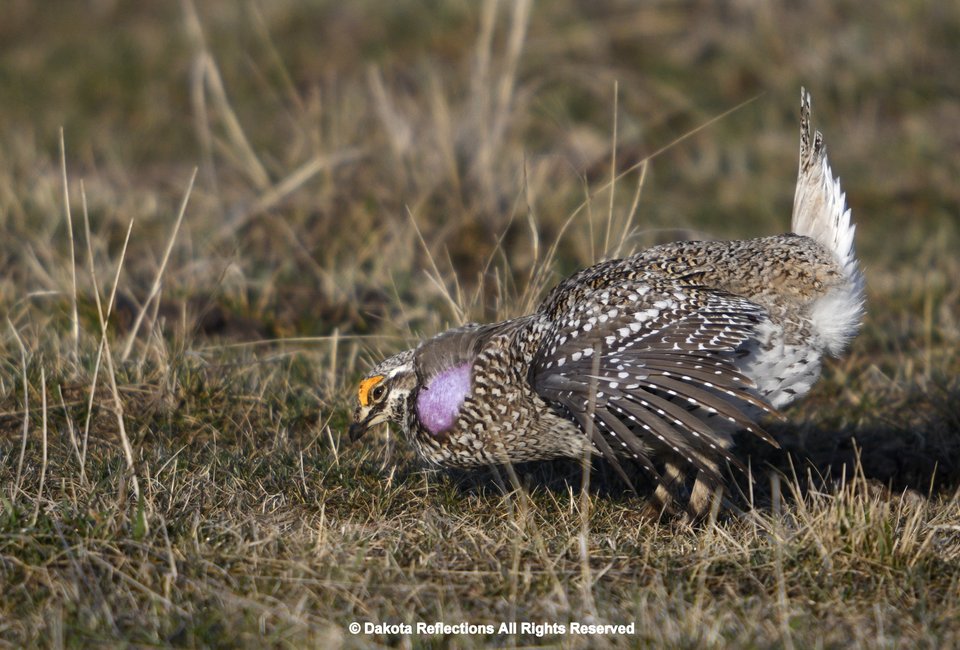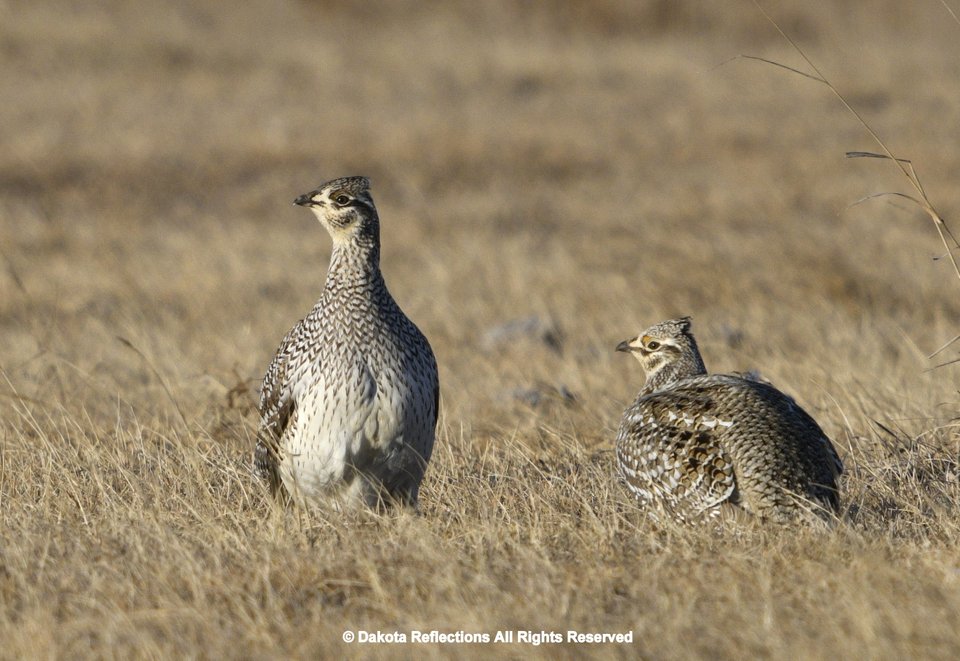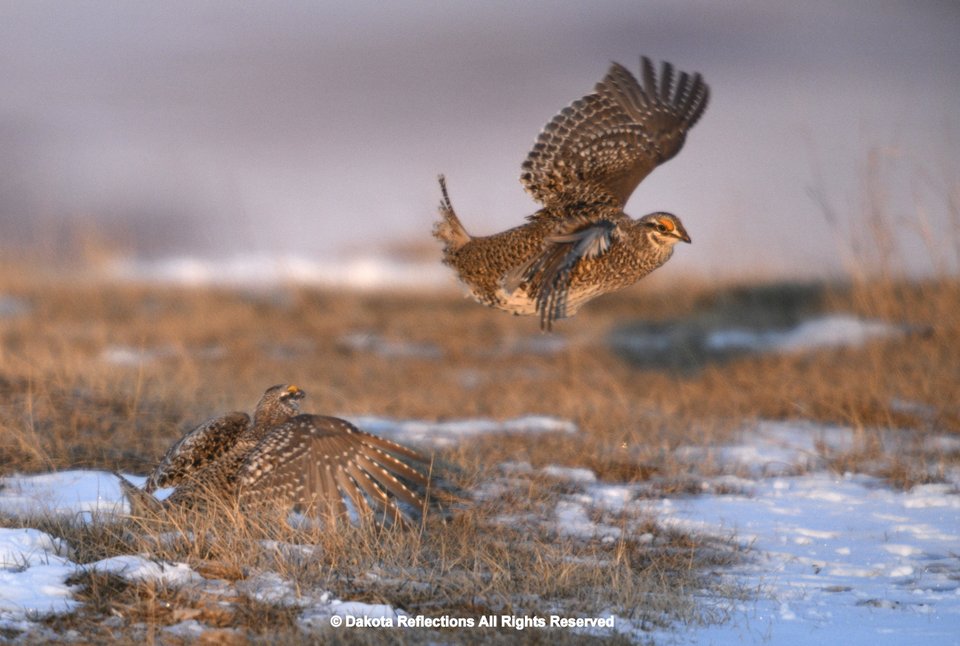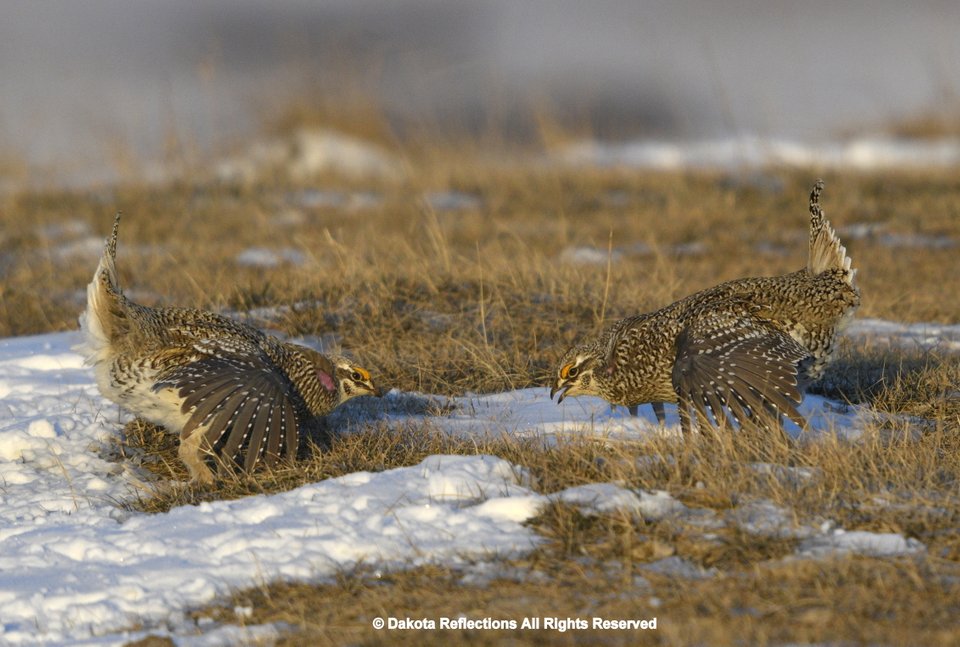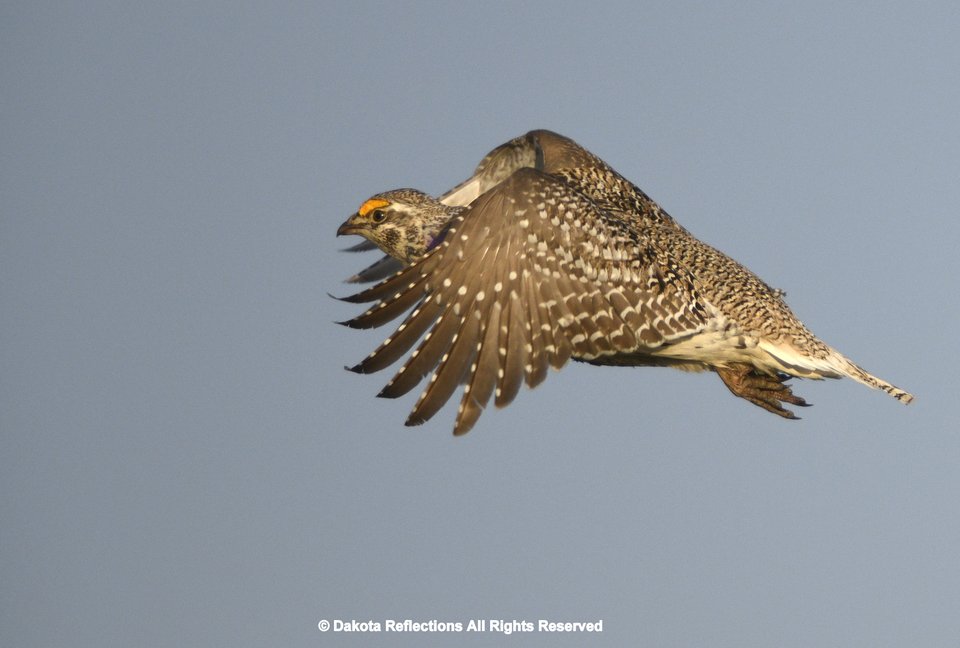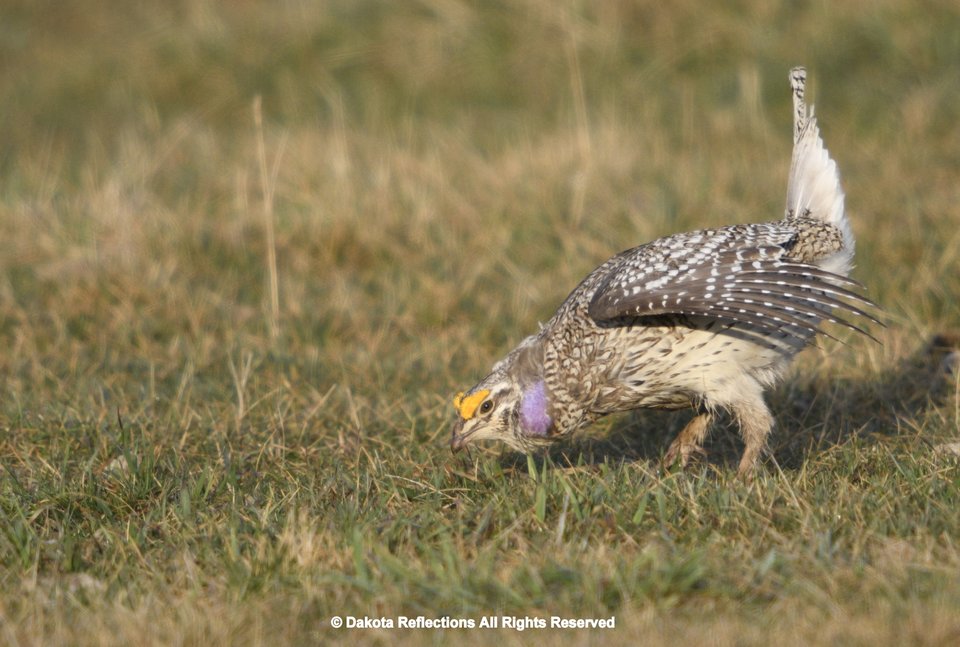Dakota Reflections
The sharp-tailed grouse is found in the northern plains and Canada. In the spring, the sharptail will congregate in open areas called leks for mating. Males have a prominent yellow patch above the eye and a brilliant violet neck patch. Males drum by stamping their feet up to 20 times a second, producing a distinctive sound. They open their wing feathers and look like small airplanes as they taxi around. Males will attack each other to establish dominance. Females have a smaller yellow patch above their eyes and lack the violet patch. Dominant males mate with females at the end of the lekking season. Females then nest and raise the chicks alone. Nests are concealed in shrubs.
This western meadowlark crashed the 30 plus sharp-tailed grouse lek and jousted with several grouse before leaving
These sharp-tailed grouse lek are staring each other down on several inches of freshly fallen snow
Combat Dancing!
The sharp-tailed grouse is a medium-sized prairie grouse. It is also known as the sharptail, and is known as fire grouse or fire bird by Native American Indians due to their reliance on brush fires to keep their habitat open. The Sharp-Tailed Grouse is the provincial bird of Saskatchewan. The sharp-tailed grouse is a lekking bird species. These birds display in open areas known as leks with other males, anywhere from a single male to upwards of 20 will occupy one lek (averaging 8-12). A lek is defined as an assembly area where animals carry on display and courtship behavior. During the spring, male sharp-tailed grouse attend these leks from March through July with peak attendance in late April, early May. These dates do fluctuate from year to year based on the weather. Johnsgard observed weather delayed lekking of up to two weeks by sharp-tailed grouse in North Dakota. The males display on the lek by stamping their feet rapidly, about 20 times per second, and rattle their tail feathers while turning in circles or dancing forward. Purple neck sacs are inflated and deflated during display. The males use "cooing" calls also to attract and compete for females. The females select the most dominant one or two males in the center of the lek, mate, and then leave to nest and raise the young in solitary from the male.
https://en.wikipedia.org/wiki/Sharp-tailed_grouse
Photo of the Day for April 24, 2019
High Jump!
The sharp-tailed grouse is trying to impress! The grouse's high jump also allows an excellent opportunity to land on its competitor and perhaps pluck a feathers.
Photo of the Day for April 22, 2019
Trophy Feather!
The sharp-tailed grouse on the right has plucked a feather from his opponent!
I Have a Headache!
The sharp-tailed grouse in the center has a headache! The headache was caused by another grouse landing on his head. What a way to start a day!!
2020 Photographs
Sharp-tailed Grouse
Oliver County, North Dakota
March 13, 2020
Sharp-tailed Grouse
Oliver County, North Dakota
April 4, 2020
Sharp-tailed Grouse
Oliver County, North Dakota
April 4, 2020
Sharp-tailed Grouse
Oliver County, North Dakota
April 26, 2020
Sharp-tailed Grouse
Oliver County, North Dakota
April 26, 2020
Sharp-tailed Grouse
Oliver County, North Dakota
April 26, 2020
Sharp-tailed Grouse
Oliver County, North Dakota
April 26, 2020
Sharp-tailed Grouse
Oliver County, North Dakota
May 23, 2020

